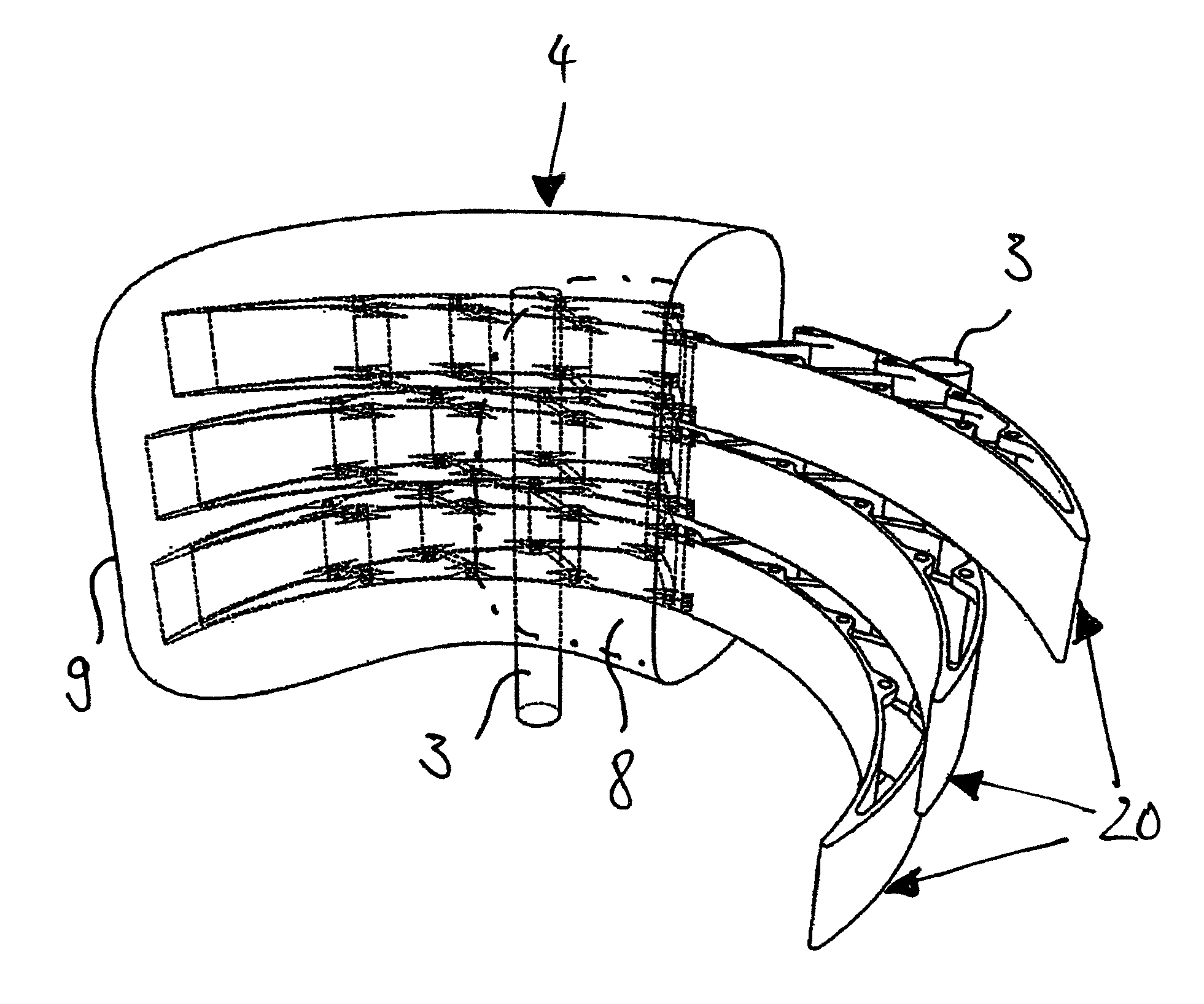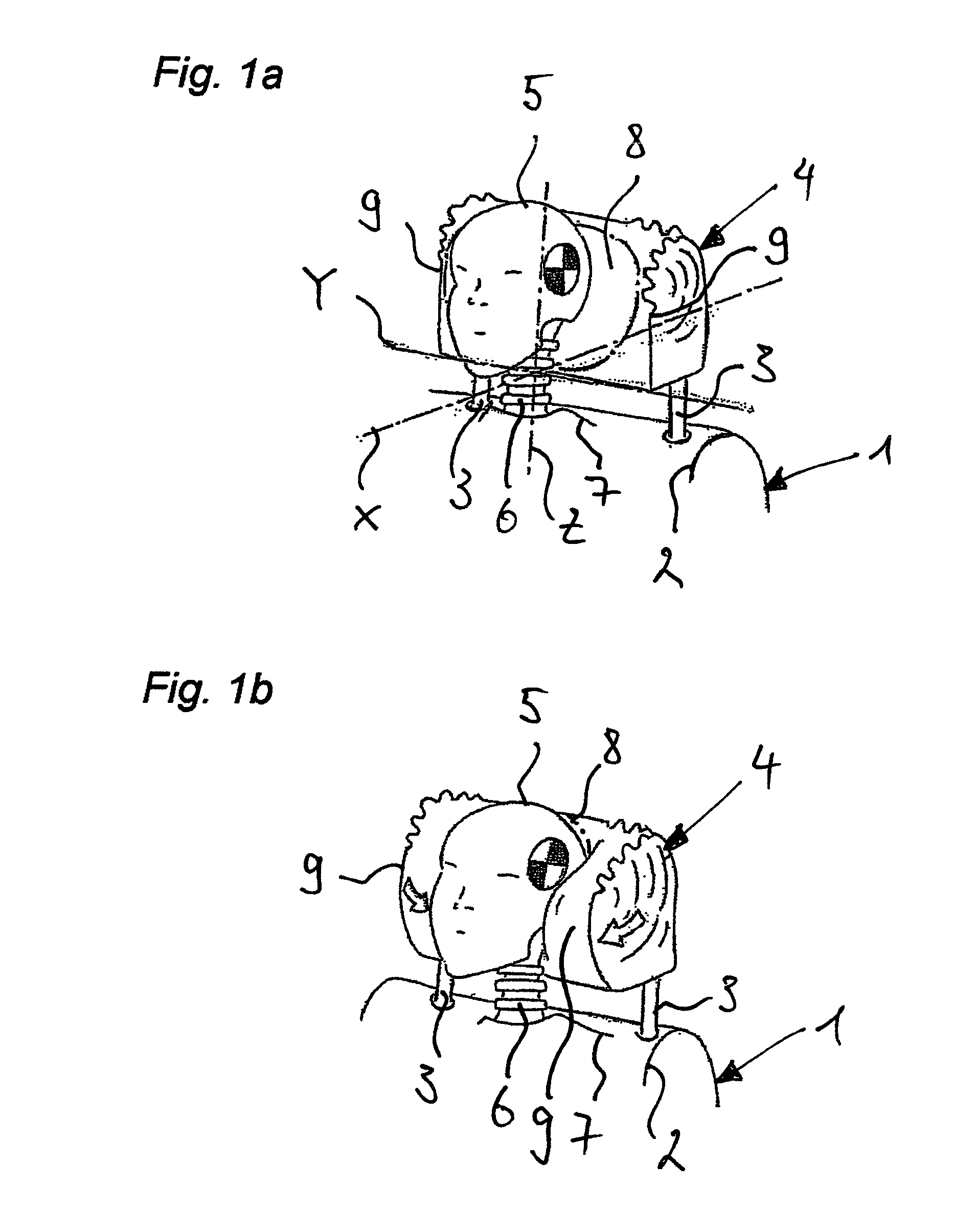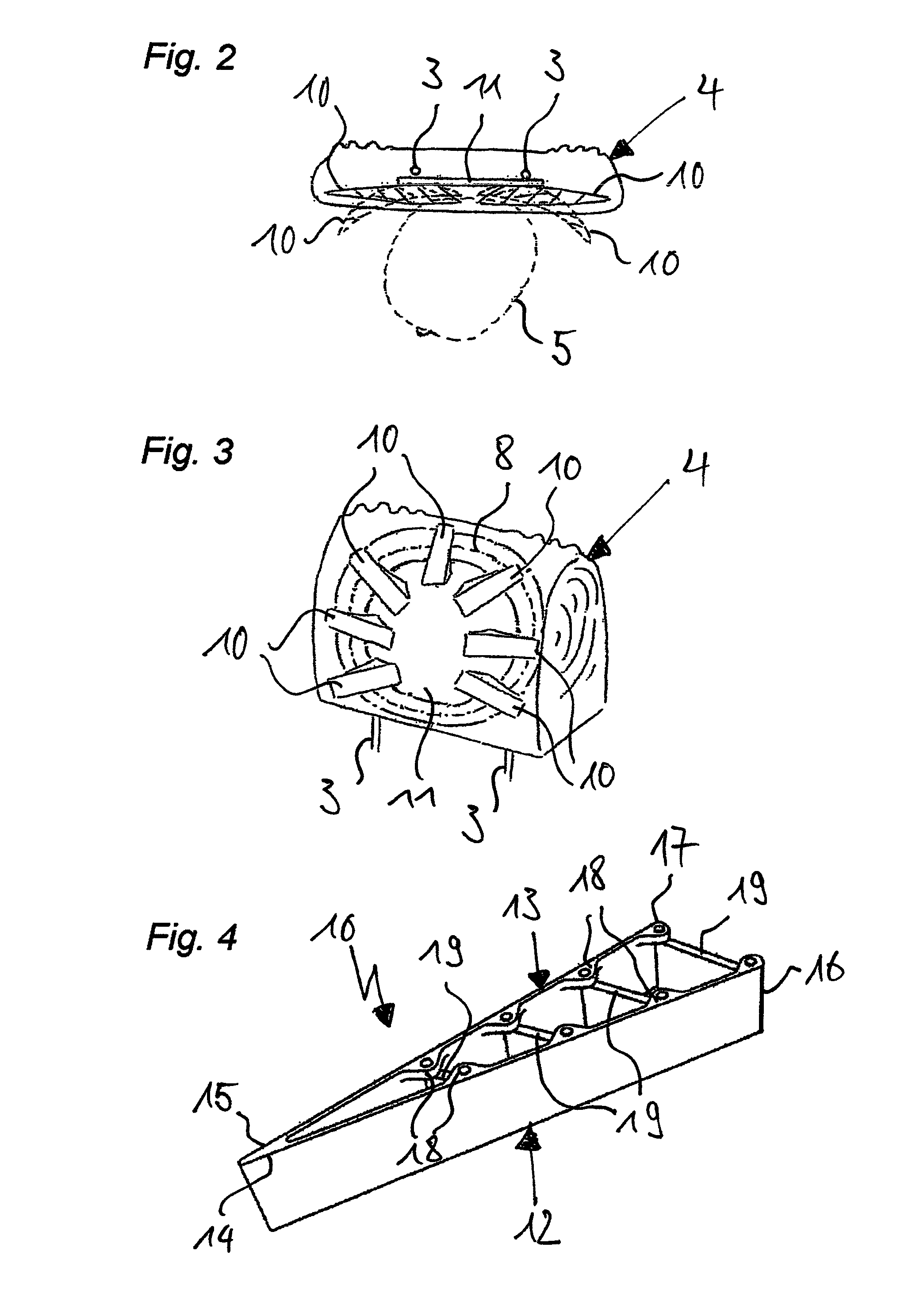Head-rest of a vehicle seat
a headrest and vehicle seat technology, applied in the direction of chairs, pedestrian/occupant safety arrangements, vehicular safety arrangements, etc., can solve the problems of cervical spine whiplash injury, extreme extension movement, overextension of spinal neck muscles, etc., and achieve high functional reliability, cost-effective and compact manufacturing, and simplified structure of the headrest.
- Summary
- Abstract
- Description
- Claims
- Application Information
AI Technical Summary
Benefits of technology
Problems solved by technology
Method used
Image
Examples
Embodiment Construction
[0037]FIG. 1a shows the upper area of a vehicle seat 1 from whose backrest 2 two holding rods 3 project for fastening a headrest 4 according to the invention. Head 5, including cervical spine 6, of a vehicle occupant whose torso is indicated by reference numeral 7 is shown in front of headrest 4.
[0038]In addition, FIG. 1a shows three orthogonally disposed spatial axes, of which the horizontal spatial axis pointing in the direction of travel is identified by X, the vertical spatial axis is identified by Z, and the spatial axis pointed transversely to the direction of travel is identified by Y. Axes X and Z span the median plane in relation to the vehicle passengers.
[0039]FIG. 1a shows the situation before an accident event occurs, in which head 5 is held at a distance from headrest 4. The area of headrest 4 which is located behind head 5 in the direction of travel has a central impact zone 8; the adjacent area on both sides in the Y direction is formed by lateral supporting surfaces ...
PUM
 Login to View More
Login to View More Abstract
Description
Claims
Application Information
 Login to View More
Login to View More - R&D
- Intellectual Property
- Life Sciences
- Materials
- Tech Scout
- Unparalleled Data Quality
- Higher Quality Content
- 60% Fewer Hallucinations
Browse by: Latest US Patents, China's latest patents, Technical Efficacy Thesaurus, Application Domain, Technology Topic, Popular Technical Reports.
© 2025 PatSnap. All rights reserved.Legal|Privacy policy|Modern Slavery Act Transparency Statement|Sitemap|About US| Contact US: help@patsnap.com



